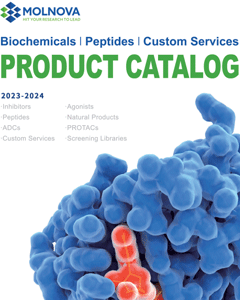
1-(4-Carbethoxyphenyl)-piperazin
CAS No. 80518-57-6
1-(4-Carbethoxyphenyl)-piperazin( —— )
Catalog No. M28685 CAS No. 80518-57-6
1-(4-Carbethoxyphenyl)-piperazin is a chemical compound.
Purity : >98% (HPLC)
 COA
COA
 Datasheet
Datasheet
 HNMR
HNMR
 HPLC
HPLC
 MSDS
MSDS
 Handing Instructions
Handing Instructions
| Size | Price / USD | Stock | Quantity |
| 5MG | 45 | In Stock |


|
| 10MG | 68 | In Stock |


|
| 25MG | 115 | In Stock |


|
| 50MG | 173 | In Stock |


|
| 100MG | 258 | In Stock |


|
| 200MG | 388 | In Stock |


|
| 500MG | 642 | In Stock |


|
| 1G | Get Quote | In Stock |


|
Biological Information
-
Product Name1-(4-Carbethoxyphenyl)-piperazin
-
NoteResearch use only, not for human use.
-
Brief Description1-(4-Carbethoxyphenyl)-piperazin is a chemical compound.
-
Description1-(4-Carbethoxyphenyl)-piperazin is a chemical compound.
-
In Vitro——
-
In Vivo——
-
Synonyms——
-
PathwayOthers
-
TargetOther Targets
-
Recptor——
-
Research Area——
-
Indication——
Chemical Information
-
CAS Number80518-57-6
-
Formula Weight234.299
-
Molecular FormulaC13H18N2O2
-
Purity>98% (HPLC)
-
Solubility——
-
SMILESCCOC(=O)c1ccc(cc1)N1CCNCC1
-
Chemical Name——
Shipping & Storage Information
-
Storage(-20℃)
-
ShippingWith Ice Pack
-
Stability≥ 2 years
Reference
1.Vedpal, et al. A new pyrimidine alkaloid from the roots of Tadehagi triquetrum (L.) H.Ohashi. Nat Prod Res. 2021 Feb;35(3):413-420.
molnova catalog



related products
-
1,3,6-Trihydroxy-2-m...
1,3,6-Trihydroxy-2-methylanthraquinone 3-O-alpha-L-rhamnosyl-(1->2)-beta-D-glucoside is a natural product.
-
5,7,3-Trihydroxy-6,4...
5,7,3'-Trihydroxy-6,4',5'-trimethoxyflavone is a natural product from Artemisia argyi.
-
Luxdegalutamide
Luxdegalutamide (ARV-766) is a novel, potent, and orally bioavailable proteolytic targeting chimera (PROTAC) protein degrader that degrades not only wild-type AR but also clinically relevant AR LBD mutants, including the most prevalent AR L702H, H875Y, and T878A mutations.



 Cart
Cart
 sales@molnova.com
sales@molnova.com


